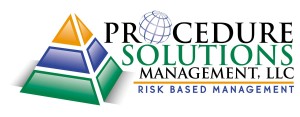
Safety is the responsibility of every single worker, no matter their position or years of experience. All personnel are encouraged to submit procedure change requests, and existing procedures must be continually reviewed for inconsistencies, compliance, and unsafe conditions.
In the early 1900s, during the fight for workers’ compensation, Theodore Roosevelt offered the following story to summarize the legal recourse for workplace injuries. He shared that a woman’s arm was ripped off by the uncovered gears of a grinding machine at her place of work.
Despite her prior warning to her employer about the legal requirements to cover the gears, the employer insisted that she continue working under those conditions or resign. Due to the common-rule laws of negligence at the time, the worker was not entitled to compensation for her injury because she continued working and risked the dangerous conditions.
Before new regulations were enacted, workers were powerless to change policies and were forced to continue working in dangerous conditions or go unemployed. Employers also risked negligence suits that could result in large settlements for the injured workers.
This story proves the importance of the procedure review process. Safety is the responsibility of every single worker, no matter their position or years of experience. All personnel are encouraged to submit procedure change requests, and existing procedures must be continually reviewed for inconsistencies, compliance, and unsafe conditions.
However, just the thought of reviewing thousands of existing procedures is overwhelming. If you’re struggling to know where to start, you’ve come to the right place. Keep reading for a comprehensive overview of the procedure review process!
When Should I Review or Make Changes to My Procedures?
If you want to know exactly how often you should review your procedures, there’s no one-size-fits-all answer to this. While it’s a good idea to complete the review process at least once a year, many other determining factors dictate when and how often you may need to complete a review. If there are organizational changes, updates to laws or regulations, or you encounter an incident or policy violation, you should immediately initiate the procedure review process.
Organizational Changes
When your organization goes through changes in leadership, ownership, internal policies, or mergers, your procedures should be reviewed to ensure they are updated with those developments. Since these changes often come with a new set of values, you’ll want to ensure your technical and administrative procedures reflect this new mission and vision.
Changes to Laws or Regulations
Laws and government regulations are constantly changing, making it a necessity to review existing procedures. Your compliance team should track these changes and note which procedures they affect.
An Incident or Policy Violation
You should never wait for an incident or policy violation to review your procedures. However, we are in the business of evaluating human performance errors, so we know these situations are not 100% avoidable.
After any incident or policy violation, you should review the procedure to see if employees followed the steps as intended. Look for any gaps, unclear instructions, human performance challenges, or potential for misinterpretation, and ensure that your procedures are user-friendly and effective in preventing errors.

When a change request is submitted, it should be screened immediately to determine its priority. This evaluation establishes if this change needs to occur immediately or if further research is required to determine if this alteration is necessary.
How Can I Effectively Review My Procedures?
No matter their seniority, all personnel are responsible for submitting procedure change requests. Ensure your fellow employees know this fundamental rule and that they always feel comfortable reporting procedure inconsistencies. Management should establish a designated location that is easily accessible for employees to submit these requests.
Evaluate Procedure Change Request
When a change request is submitted, it should be screened immediately to determine its priority. This evaluation establishes if this change needs to occur immediately or if further research is required to determine if this alteration is necessary.
It’s also essential to review the purpose and scope of the document to assist with this evaluation. The purpose and scope define the procedure’s objective, the timeline for each action, and the rationale for the procedure. It further communicates who the primary audience is and the limitations on what the user can achieve. Evaluate the procedure change request to determine if it applies to the purpose and scope of the procedure.
Plan the Procedure Development
Before you can begin reviewing your procedure, you need to set a clear understanding of what you’re hoping to attain during the review process. Make a list of your goals, objectives, and desired outcomes to ensure you’re set up for success.
It’s also essential to identify the people who these changes will impact. Some of those stakeholders will be members of management and procedure users. You should also consult human resources, finance, or legal representatives to ensure these changes follow policies and regulations.
Giving these stakeholders a voice will increase the likelihood of compliance, provide multiple perspectives, and assist in passing along institutional knowledge.
Research Procedure Change Request and Develop Procedure Draft
To develop a procedure draft, you’ll need to evaluate why this inconsistent step was written, how long it has been there, and if any other steps need to be amended in accordance with this revision.
Developing a procedure draft requires a good questioning attitude to address potential human performance challenges. Here are a few essential things to remember to refine your questioning attitude:
- Separate facts from assumptions and opinions.
- Validate assumptions.
- Be aware of critical aspects of the task.
- Do not assume approved sources are applicable or infallible.
- Do not rationalize away inconsistencies.
- Do not follow procedures without critical thinking.
- Seek help when faced with uncertainty.
Utilize your company’s approved procedure writer human performance self-checklist to inspect your work before moving it to the next step of the review process. You should be able to confidently check off each item on your self-checklist before passing it through to be reviewed.
Review Procedure Draft
Once you create your procedure draft, you must determine the appropriate subject matter experts to review it. Consult with your stakeholders to determine the most qualified person to evaluate your procedure’s safety, accuracy, compliance, and efficiency.
These stakeholders must be the people who interact with the required procedure equipment the most and possess the greatest knowledge of the laws and regulations that apply to the procedure. There should be many eyes on your procedure draft to ensure the risk of human error is low.
Approve Procedure
Once the procedure draft is approved, create a realistic timeline for when these changes will go into effect. You should also develop a criteria checklist for how to evaluate updated procedures. Refer to your goals and objectives to decide how to implement these new updates.
Review your current procedures to evaluate if any documents need to be amended to comply with your updated procedures. This evaluation will also help you assess how often you should review procedures in the future. If many of your procedures seem outdated compared to your current policies, you’ll know you need to perform a review more often.
Finalize and Implement a Change Management Plan
Communication is vital to ensure procedure changes work. Even the best procedures will fail if they are poorly implemented. Create a plan for how you will notify and enforce these changes to the rest of the team.
Communicate these new changes to your entire team and verify they understand what these modifications mean. Encourage them to contact you if they don’t understand these revisions – this will help you discern if these changes may need some tweaking.
Issue Procedure for Use
Finally, your procedure is ready to be issued for company-wide use. Keep in mind that your work isn’t done here – you must regularly review procedures to keep them updated and aligned with current policies and practices.
Any changes you’ve made to your procedures should be documented and stored in a place that’s easily accessible for all to review. Noting these changes will help others understand why they were made so the same errors are not repeated in the future.

Our PPA Procedure Writer Certification Course will help you gain insights into the programmatic error traps associated with the procedure review and approval process.
Where Can I Learn More About the Procedure Review Process?
Ensuring your procedures are compliant with laws and regulations, easy to understand, and follow human-factored guidelines can feel like a daunting task. However, educating yourself about the industry standards is key to streamlining the procedure review process and ensuring its effectiveness and safety.
Our PPA Procedure Writer Certification Course will help you gain insights into the programmatic error traps associated with the procedure review and approval process. We provide an in-depth review of the procedure review process and how to ensure your procedure content is human-factored for an efficient and safe procedure review. You’ll gain the skills and knowledge to confidently write human-factored content while becoming a certified procedure writer.
Visit our training page to view the latest course dates and to register!




